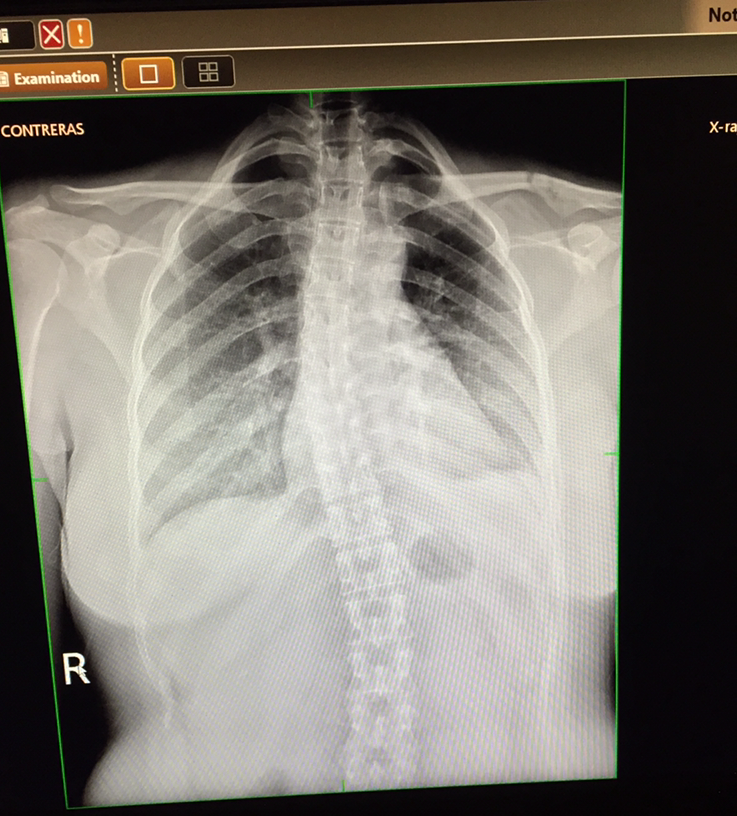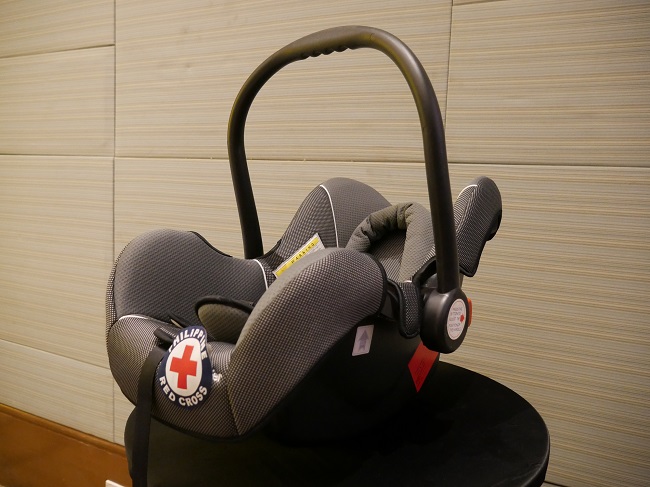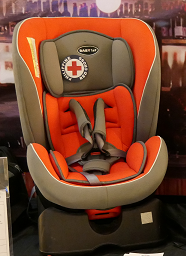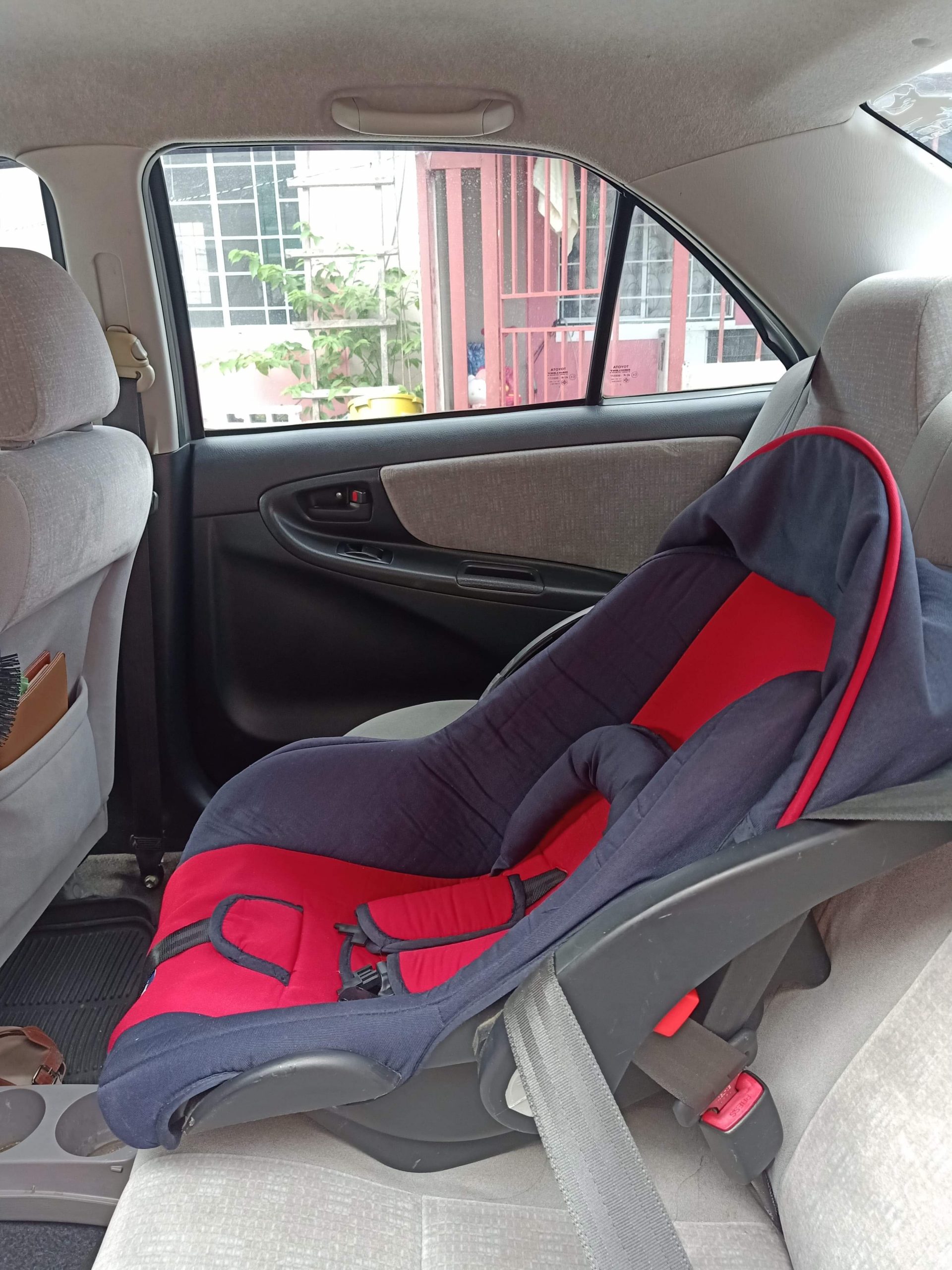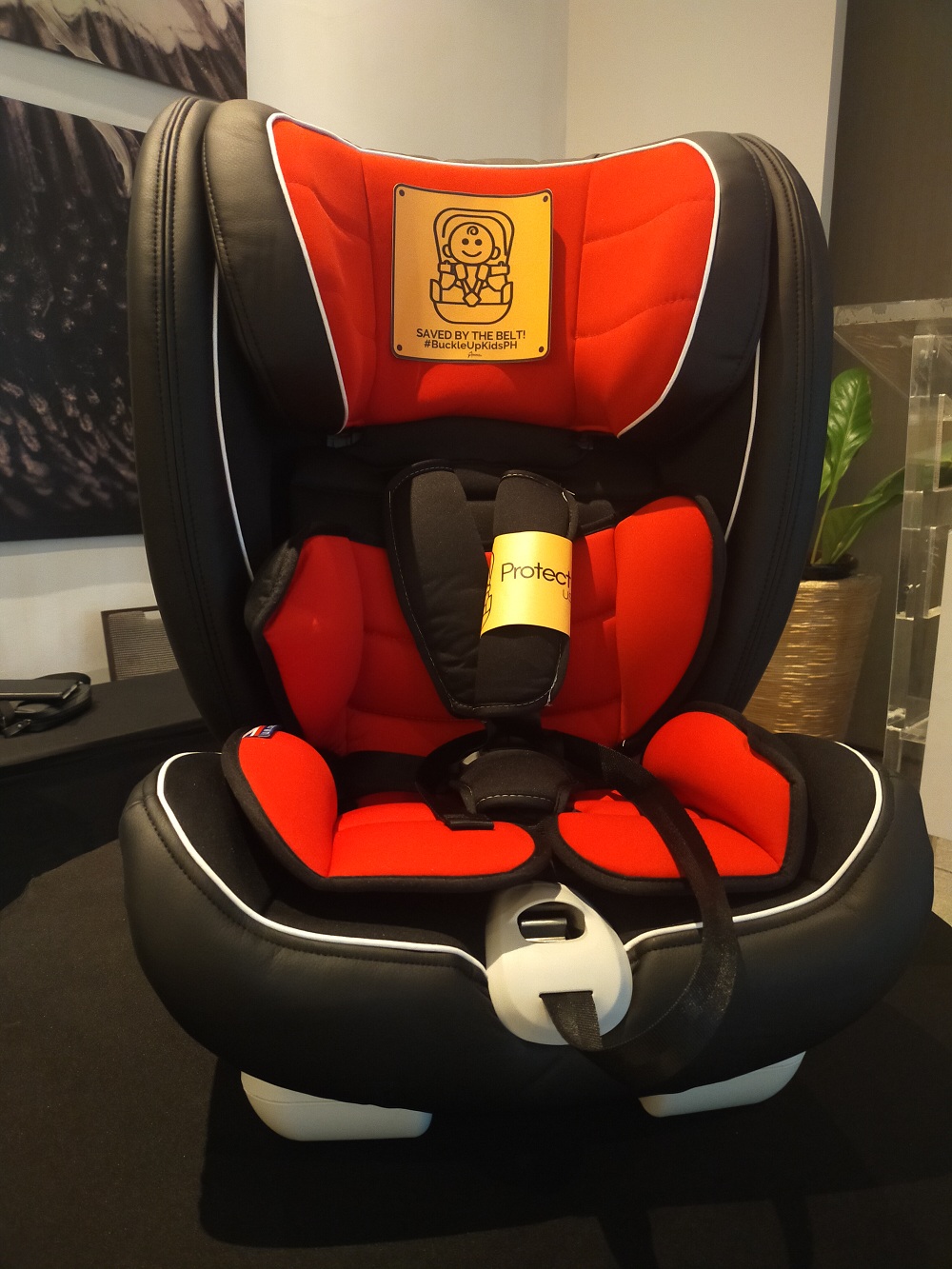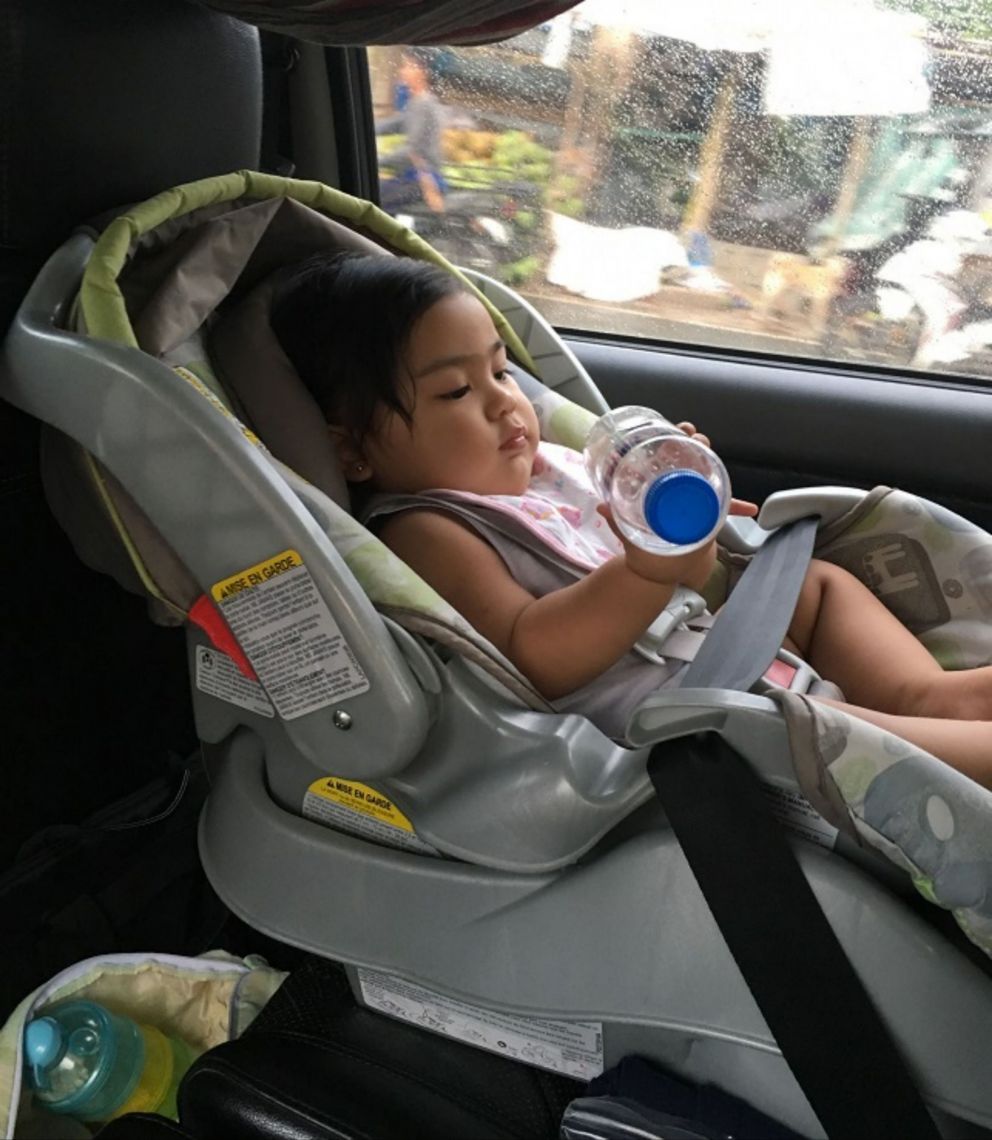
Erin is safely strapped in a car seat, which saved her from harm during a crash that injured her parents.
January
13, 2018 is a day that is forever etched in the memories of Marco and
Elaine Garcia.
The
couple and their seven-month-old daughter were making their way
through the Northern Luzon Expressway (NLEX) in what was supposed to
be a routine drive.
Marco
was driving, almost auto-pilot, on a trip they had taken countless
times since Erin was born. Mother and daughter were asleep behind
Marco, who was strapped into the driver’s side of the Hilux. Elaine
had been used to unbuckling herself to be closer to Erin, who was
herself strapped behind the driver’s seat in a rear-facing child
restraint.
As
they were cruising along NLEX, the 18-wheeler truck they were
following suddenly hesitated, the driver perhaps realizing he had
turned at the exit by mistake.
On a
highway, and running at 80 kilometers per hour, hesitation can be
costly. That particular day, the truck driver’s hesitation led
to an abrupt stop that triggered a chain reaction Marco would
remember his entire life.
“It’s
very unusual. I feel that I remember every detail, the 31-year-old
dad said as he recounted the experience.
The
physics of the crash is unmistakable, with most of the contents of
the 18-wheeler subjected to the inertia of the full stop. In a
few seconds, the Garcia family’s road trip would instantaneously
become a cacophony of shattering glass, crunching metal, and perhaps
the burn and skid of rubber as Marco floored the brakes, trying his
hardest to avoid crashing into the truck.
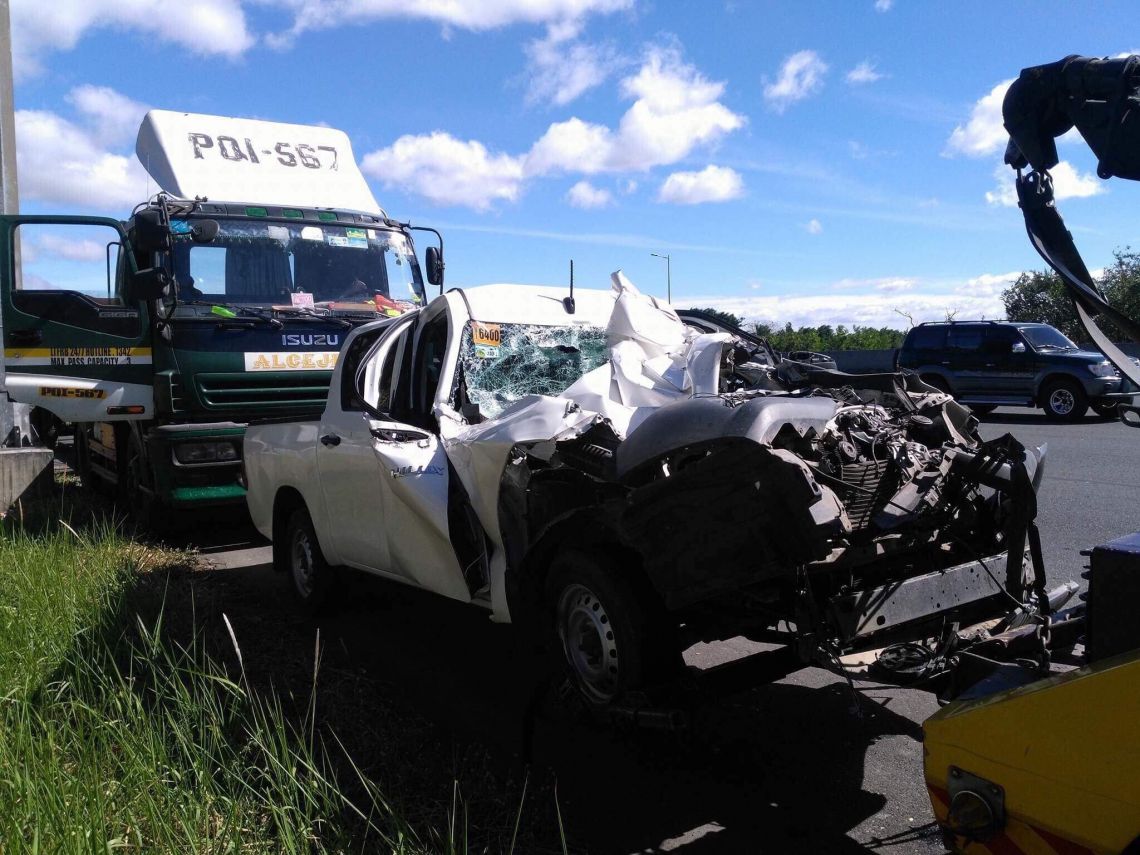
The scene of the crash site along NLEX.
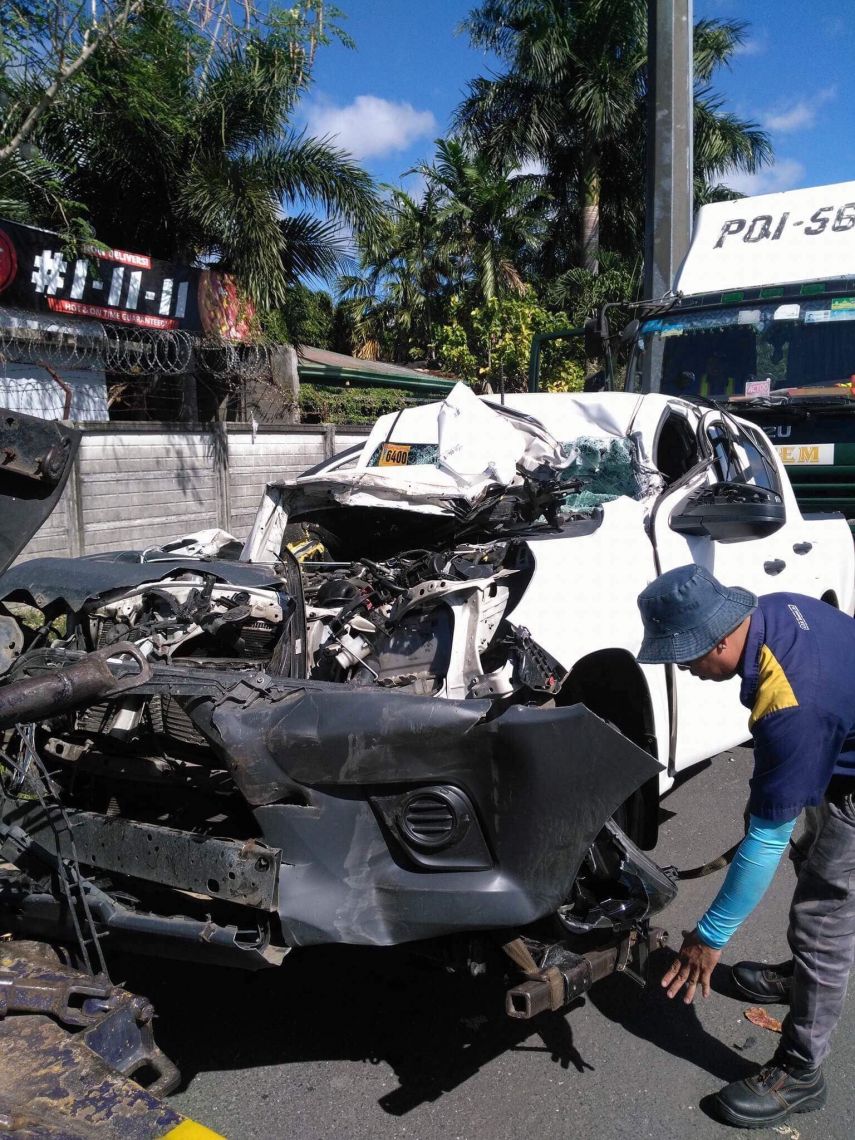
A man inspects the Hilux prior to towing. The driver of the truck escaped the crash site.
Elaine
was sent flying from the backseat and into the glass. Her head hit
the rear view mirror and her entire body ended up through the
windshield. Marco’s hands were crushed by the impact and trapped at
the steering wheel. He suffered bruises around his torso that was
wrapped in the relative safety of the seatbelt.
An
adrenaline rush allowed Marco to break open the car door so he could
help Elaine. A vehicle behind them stopped to assist.
Throughout
the ordeal, Erin was unharmed and saved by the rear-facing child
restraint seat.
It took
months for the couple to recover from their injuries.
Marco
had his hands stitched; they now bear the memory of that incident.
Elaine, for her part, bears most of the brunt of the crash. Her
injuries include a broken left collar bone and four broken ribs that
were dangerously close to piercing through some of her organs. She
needed stitches on her head, and suffered from internal bleeding.
Among Elaine Garcia’s injuries were a broken collarbone and a few broken ribs, and a head concussion.
For
weeks, Elaine could not execute a full inhale and she had to wear arm
support to help her bones heal.
Saved
by a car seat
One can
only imagine how the crash would have hurt the fragile Erin had she
not been strapped safely in a car seat.
The
incident came as both Houses of Congress started discussions
requiring vehicle owners to secure their children in a car restraint
system (CRS). A year and a month later, President Rodrigo Duterte
signed Republic Act 11229 or The Child Safety in Motor Vehicles Act.
Under
the law, parents like the Garcias who own vehicles, are required to
make sure their children who stand less than 4’11” are in the
safest parts of a vehicle.
The law
requires children to be strapped safely at the backseat, with no
child below 12 years old allowed on the front seat. Infants like
Erin, for their part, are required to be safely cradled inside a
certified CRS.
Penalties
range from P1,000 to P5,000, as well as the suspension of license,
for drivers caught in violation of the law. Manufacturers,
distributors, importers, retailers, and sellers, are also required to
comply with safety standards set by law or face fines from P50,000 to
P100,000.
Erin is
a perfect example of safety conditioning, as the family made sure she
would feel right at home in the comfort of the CRS. The couple
invested in a Graco hybrid cradle/stroller, upon the insistence of
family members and relatives living abroad. As a force of habit, Erin
would grow up seeing the car seat as hers and no one else’s.
One of
Marco’s aunts from abroad once asked him why the devices were not
required in the Philippines. Now they are.
The
price of a CRS ranges from P9,000 to P20,000, depending on the brand,
according to the Garcias. Some are for sale for as low as P6,000 to
P7,000. For parents who value their children, price is not an issue.
A study
by the Institute of Health Policy and Development Studies in the
University of the Philippines Manila (UP-IHPDS) says the devices are
“available and accessible to Filipino consumers.”
It
nonetheless urges the government to be considerate of the
socio-economic situation in the country should it require motorists
to own CRS devices. (The World Health Organization (WHO)-funded study
was conducted before the car seat law was signed last Feb. 22).
The
UP-IHPDS study recommends that government offer subsidies in the form
of rentals or coupons, aside from partnerships with car manufacturers
that would give away the devices along with car purchases.
Raise
public awareness
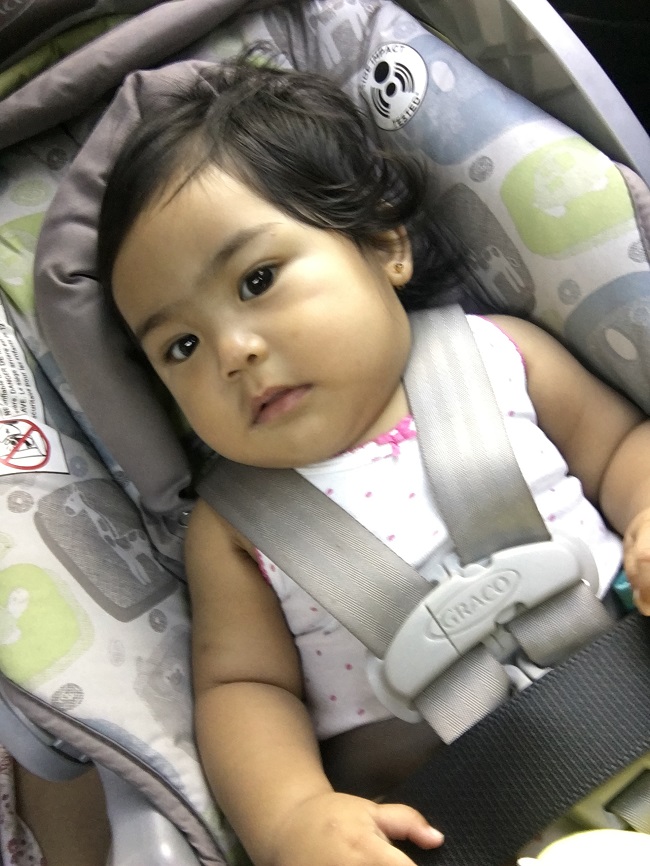
Erin turns two this year. Using a car seat is routine for her now.
Equally
important, the study says there is a need to increase the public’s
awareness of the devices.
Even the
Garcias have questions of their own.
Apparently,
Elaine’s unbuckling of her own seatbelt was an issue of
user-experience. With the rear-facing child restraint strapped behind
Marco’s driver’s seat, Elaine could only be safely strapped if she
was two seats away on the opposite side of the backseat. Motherly
instinct kept her near Erin.
“Shouldn’t
the CRS be in the middle instead,” Elaine asked, “for mothers
like me to be strapped safely as we tend to our children?”
In other
countries, Marco chimed in, it is illegal for parents to attend to
children inside moving vehicles because of really strict laws. “If
I remember correctly, the parents there stop their vehicles to take
care of crying babies.”
Asked if
the same policy is possible here, Marco said: “It’s doable.”
But this could only work, he added, if the policymakers include a
pullover provision in the implementing rules and regulations.
At the
moment, stakeholders are still drafting the implementing rules for RA
11229.
But
after the incident more than a year ago, Elaine makes sure she straps
herself in, as she travels regularly from their home in Las Pinas to
her Makati City workplace. “It changed me.”
Marco,
for his part, appreciates the comfort the CRS provides Erin. “It’s
the best feature of the rear facing car seats: its buckle design, and
its cushion that makes it comfortable for infants. The device
pulls the infant user towards her backrest during brakes. “Even
if the impact is strong, she probably will just get startled.”
According
to the WHO 2018 Global Status Report on Road Safety, road traffic
injuries are currently the leading cause of death for children and
young adults (aged 5-29 years) worldwide. This “signals the need
for a shift in the current child and adolescent health agenda, which
to date, has largely neglected road safety,” the report said.
The new
law aims to change the statistics and hopes to improve the chances of
families traveling safely in private vehicles.
The photos in the article were taken by the Garcia couple.
Yas
D. Ocampo is a journalist based in Davao City. He is in charge
of the digital executions of Mindanao Times, Mindanao’s longest
running community newspaper.
This
story was produced with the help of a grant from The Global Road
Safety Partnership (GRSP), a hosted project of the International
Federation of Red Cross and Red Crescent Societies (IFRC).
